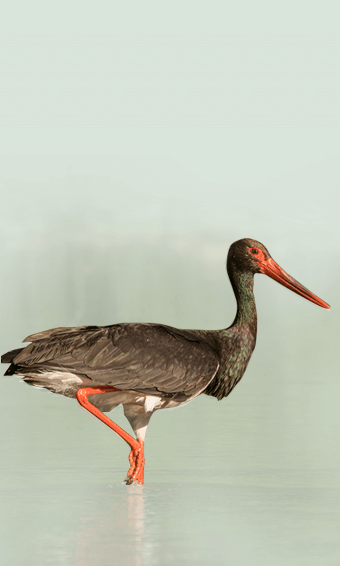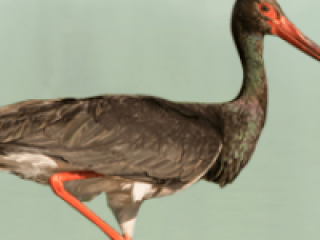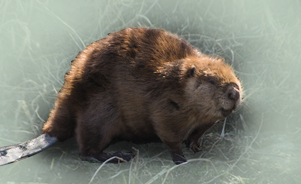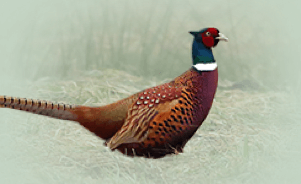Black stork Ciconia nigra

Features
The black stork is a large migratory bird from the stork family, which nests in Europe and across all of Northern Asia (except the extreme north) to the Pacific Ocean and Southern Africa. It is similar to the white stork and is distinguished from it by the black colour of most of its body.
| Species | Bird |
| Living space | Conifer forest, Rivers, Swamp |
| Size | 95 -100 cm |
| Weight | 2,9 kg |
Description
The black stork is a little smaller than the white stork, with the body length of 90 to 105 cm and the wingspan of 173 to 205 cm. Most of its body is covered in black feathers, which shine in metallic green, violet or copper, depending on the angle. Only the triangular base of the lower part of the wings, the belly and the lower part of the tail are white. The beak, legs and skin around the eyes are vivid red. Chicks have less shiny feathers and a grey-green beak and legs. The black stork mostly nests deep in damp, old, conifer forests, which are crossed by rivers and swamps. It builds its nest with branches in treetops high above the ground. It feeds mostly on insects and amphibians that it catches near water. It nests in the greater part of Eurasia, where the climate is temperate; there are about 15 couples nesting in Slovenia. The black stork migrates from Europe about a month later than the white stork and returns in May. Given that in its flight it relies mostly on air currents that occur only over land, it has to cross the Mediterranean flying through the straits. The highest number of black storks together can thus be seen when they migrate through Bosporus. Another important crossing is the Gibraltar Strait, while around 10% of the black storks pass the Mediterranean on the narrowest part – between Sicily and Tunisia. Black storks living in Central and Eastern Asia spend their winters in South Asia.
Features Temenica (3)
SPECIAL ogr.




